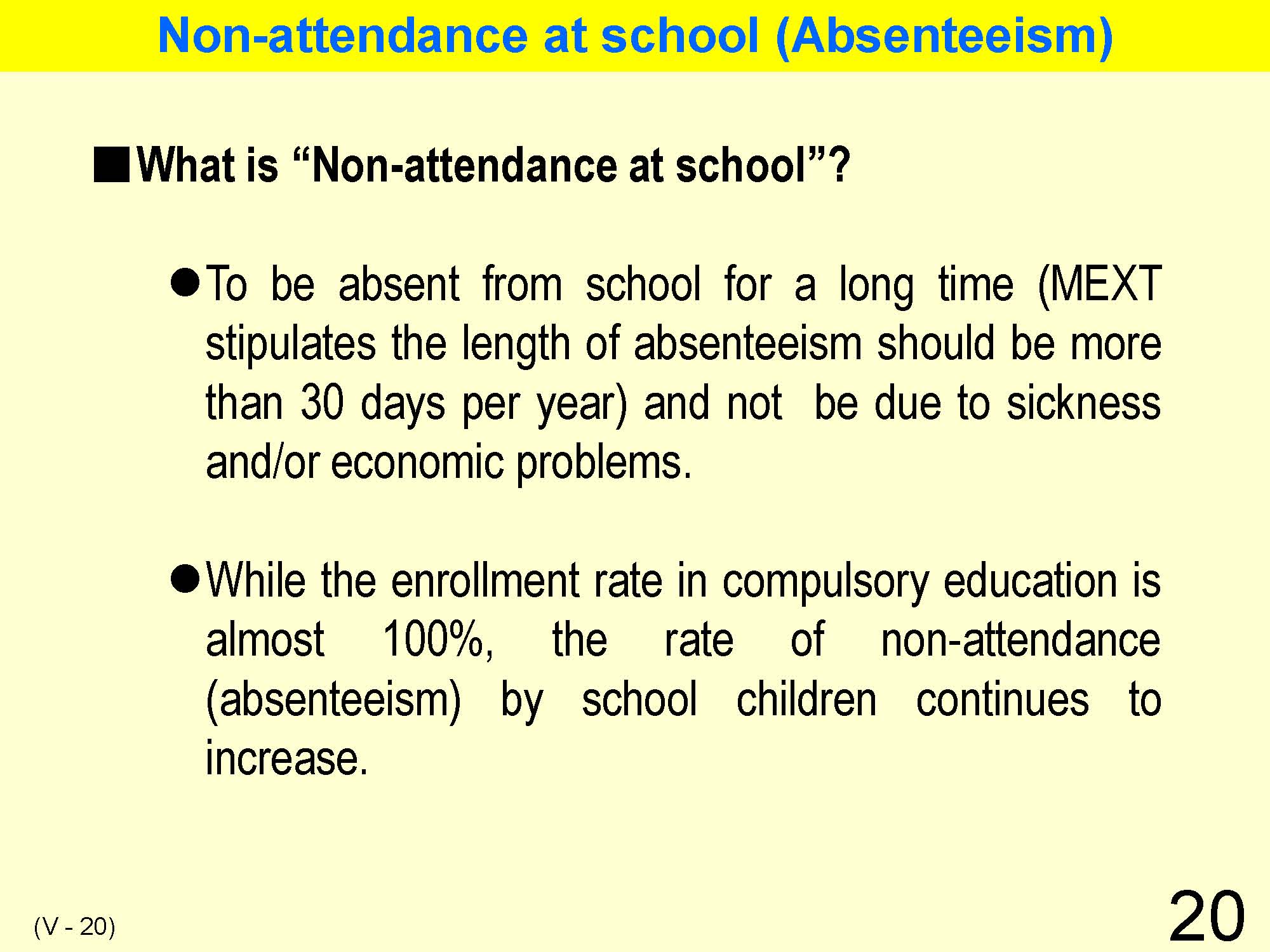| 20 | gV Classroom Management and Guidanceh | Previous | Next | JAPANESE |
|---|---|---|---|---|
 |
||||
| Since the Meiji era, eincreases in educational enrollment and advancement ratesf in Japan have served as important indices to demonstrating the development of public education. After World War II, enrollment rates reached almost 100% in 9-year compulsory educational facilities. While increasing advancement rates to universities followed the rapid increases in advancement rates to upper secondary schools from 1950 to 1970, students who cannot and/or donft want to go to school are appearing today.
This symptom of dropout children has come to be viewed as remarkable and has been termed a eschool phobiaf. It is commonly viewed as a kind of disorder in which children of school age personally donft like attending school. More recently this phenomenon has begun to be called etohkoh-kyohi,f which means children themselves refuse to go to school. And now it is termed enon-attendance at school,f or absenteeism, which has a more general meaning that acknowledges the fact that children donft go to school for various reasons.( Non-attendance /II-47~48) |
||||
Please send your comments and concerns here
kamada@criced.tsukuba.ac.jp
Center for Research on International Cooperation in Educational Development(CRICED) University of Tsukuba
1-1-1, Tennodai, Tsukuba-shi, IBARAKI
305-857, JAPAN